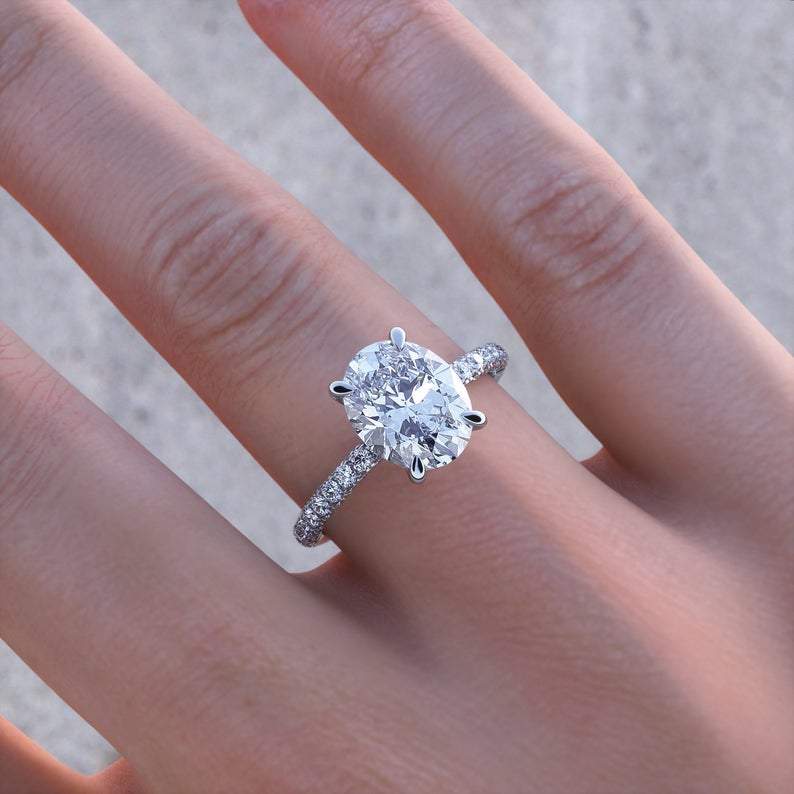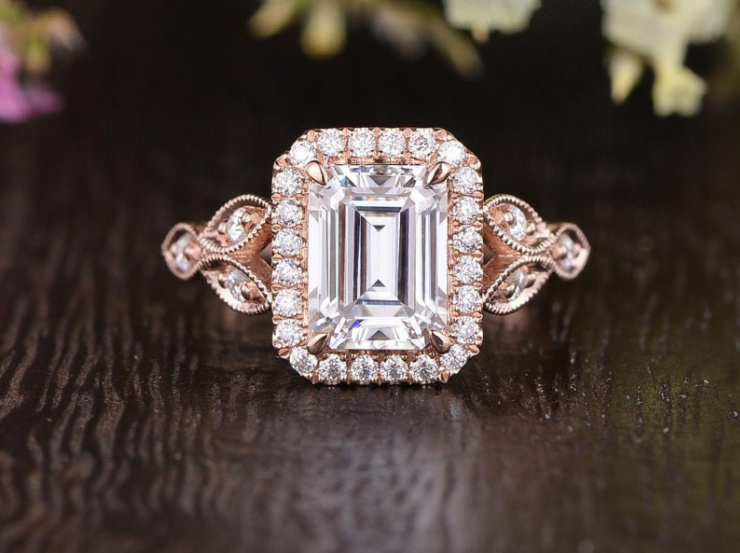Other than buying traditional diamonds (and the ethical and cost implications of doing that) moissanite and lab-grown diamonds are two distinct options - especially when it comes to engagement rings and wedding jewellery. In fact, it’s not unusual for shoppers to opt for a combination of diamond and moissanite rings or diamond and lab grown rings in the same piece - giving that luxury effect...but for far less money.
Which Is Better: Moissanite Or Lab Created Diamonds?
So they’re not the same!? No, they are different, and this difference can be found in both composition and origin.
Composition:
Moissanite - Moissanite is a naturally occurring mineral, silicon carbide, discovered in a meteorite. It is often used as a diamond alternative in jewellery due to its brilliance and durability.
Lab-Grown Diamond - Lab-grown diamonds are created in a controlled environment, replicating the natural diamond-growing process. They have the same physical and chemical properties as natural diamonds.
Origin:
Moissanite - As mentioned, moissanite is a naturally occurring mineral. However, most moissanite used in jewellery today is lab-created, as natural moissanite is rare and typically small in size.
Lab-Grown Diamond - These diamonds are created in a laboratory setting using high-pressure, high-temperature (HPHT) or chemical vapour deposition (CVD) methods.
Hardness:
Moissanite - Moissanite is a very hard material, second only to diamonds on the Mohs scale. It is durable and suitable for everyday wear.
Lab-Grown Diamond - Lab-grown diamonds share the same level of hardness as natural diamonds, making them equally durable and suitable for daily wear.
Brilliance:
Moissanite - Moissanite often exhibits more fire and brilliance than diamonds, meaning it can disperse light into colours more vividly.
Lab-Grown Diamond - Lab-grown diamonds have the same brilliance as natural diamonds, characterised by their sparkle and white light reflection.
Cost:
Moissanite - Generally, moissanite is more affordable than diamonds, making it
an attractive option for budget-conscious consumers.
Lab-Grown Diamond - While typically more affordable than natural diamonds, lab-grown diamonds can still be more expensive than moissanite.
Diamond vs Moissanite vs Lab Grown Rings
Again, from a “4 Cs” perspective — cut, colour, clarity, and carat — lab grown diamonds boast a higher level of quality across the board. Mined diamonds rely on the Earth’s conditions to determine their quality or lack thereof, whereas, in a lab, manufacturers can directly control a diamond’s quality. The Infinity Diamond Jewellery range of lab grown rings is a great place to start when finding that perfect piece - particularly when looking for something flawless for a special occasion.
Beyond the 4 Cs, ethical considerations also play an important role in the choice between moissanite and lab-grown diamonds. Traditionally mined diamonds raise environmental and labour concerns, prompting many consumers to seek an alternative. Both moissanite and lab-grown diamonds indeed offer ethical alternatives, but the distinction lies in their origin.
Moissanite is a naturally occurring mineral, although it is predominantly lab-created due to its natural scarcity. Lab-grown diamonds, on the other hand, are entirely cultivated in controlled environments, eliminating concerns related to unethical mining practices. For the conscientious consumer, the ethical stance of their chosen gemstone can be an all-important decisive factor in the selection process.
So for those mindful of their budget, moissanite emerges as a practical choice - it offers a similar aesthetic appeal without the hefty price tag to natural diamonds, a win-win for some. On the other hand, lab-grown diamonds are a great choice for those seeking an ethical alternative, as they are produced in controlled environments, bypassing concerns associated with traditional mining practices.
In the dazzling world of gemstone decisions, picking between moissanite and lab-grown diamonds is like choosing between two sparkling superheroes. It all boils down to your personal preferences, budget and the ethical cape your gem wears.
*Collaborative post








No comments